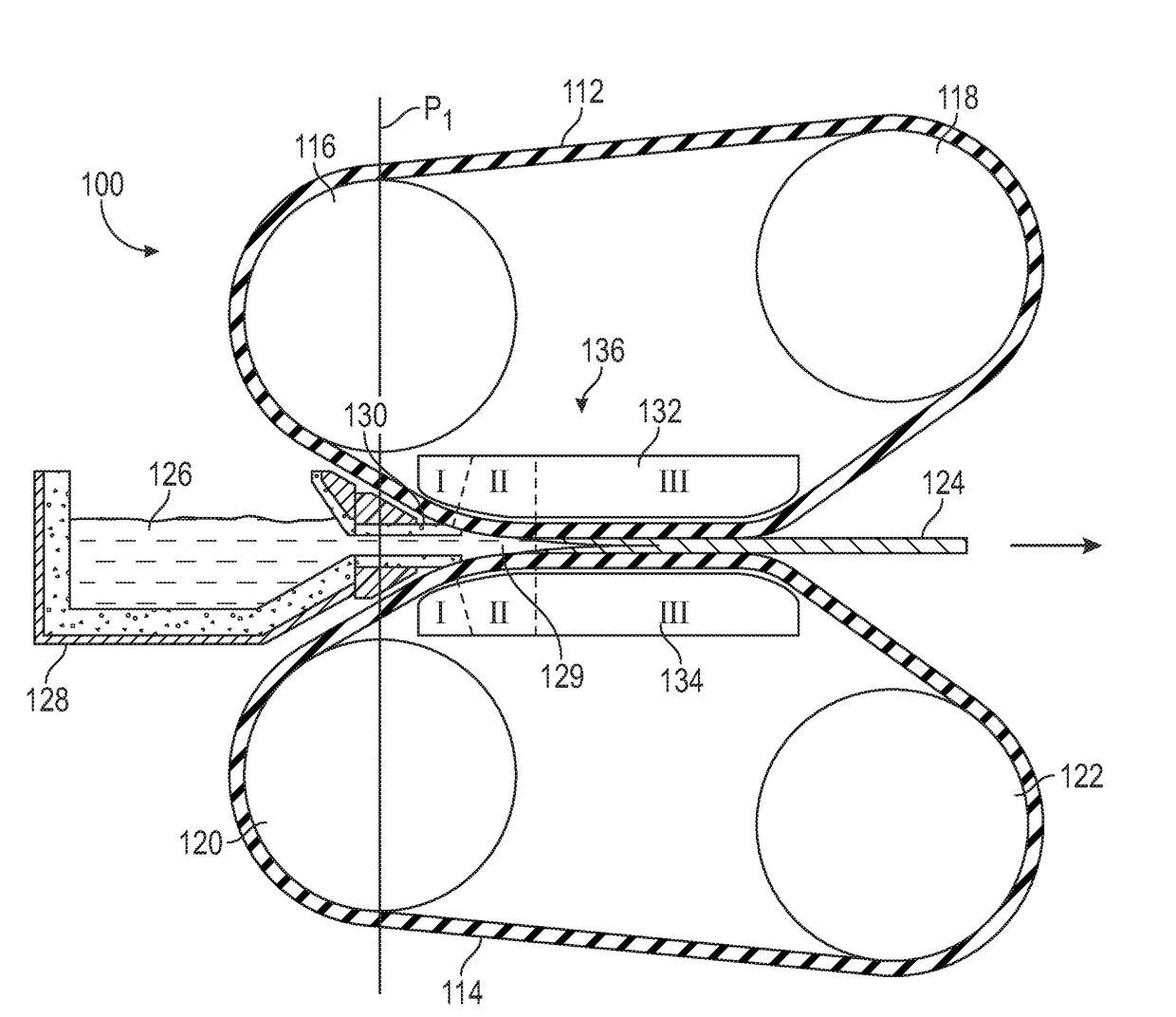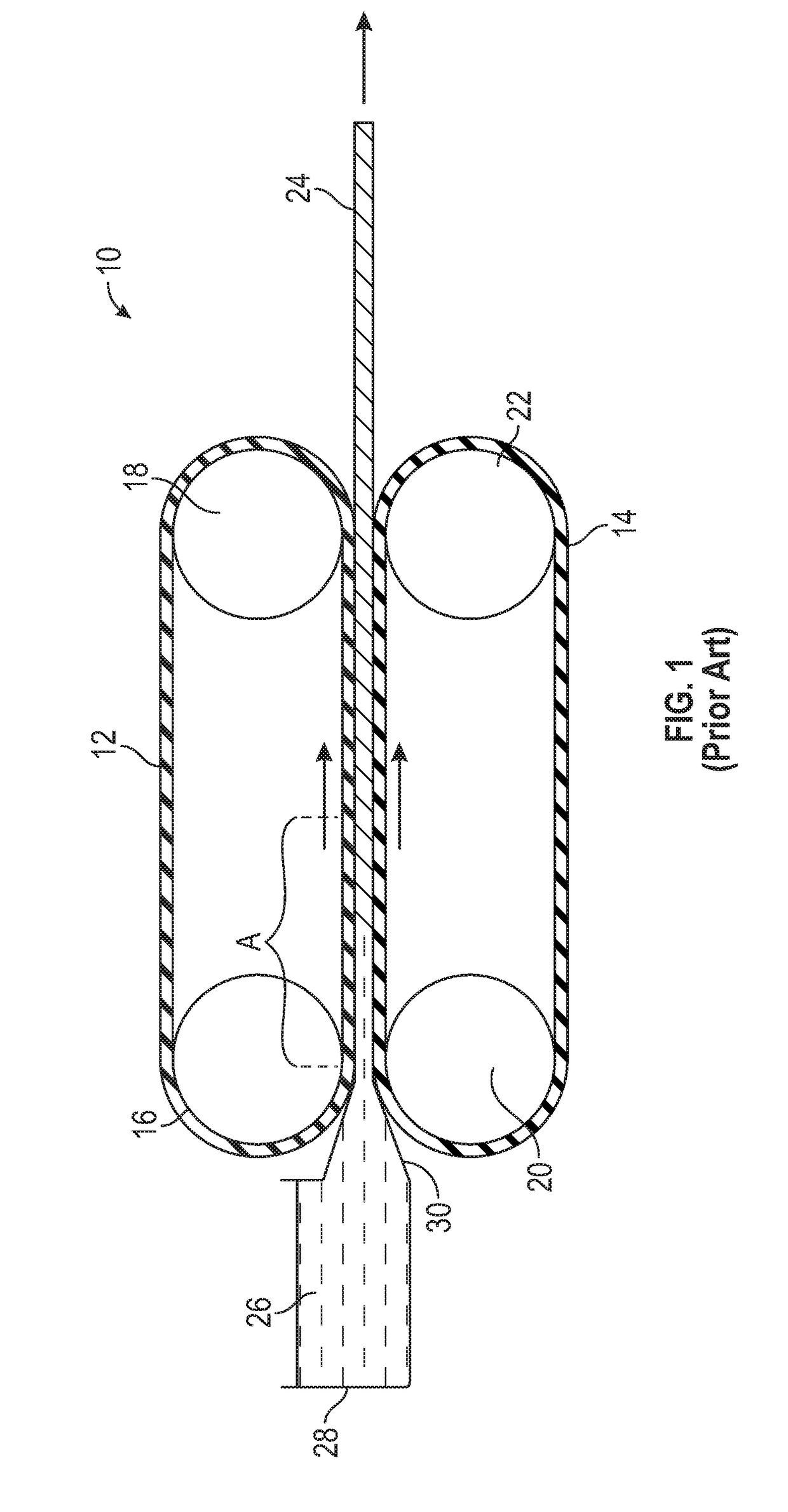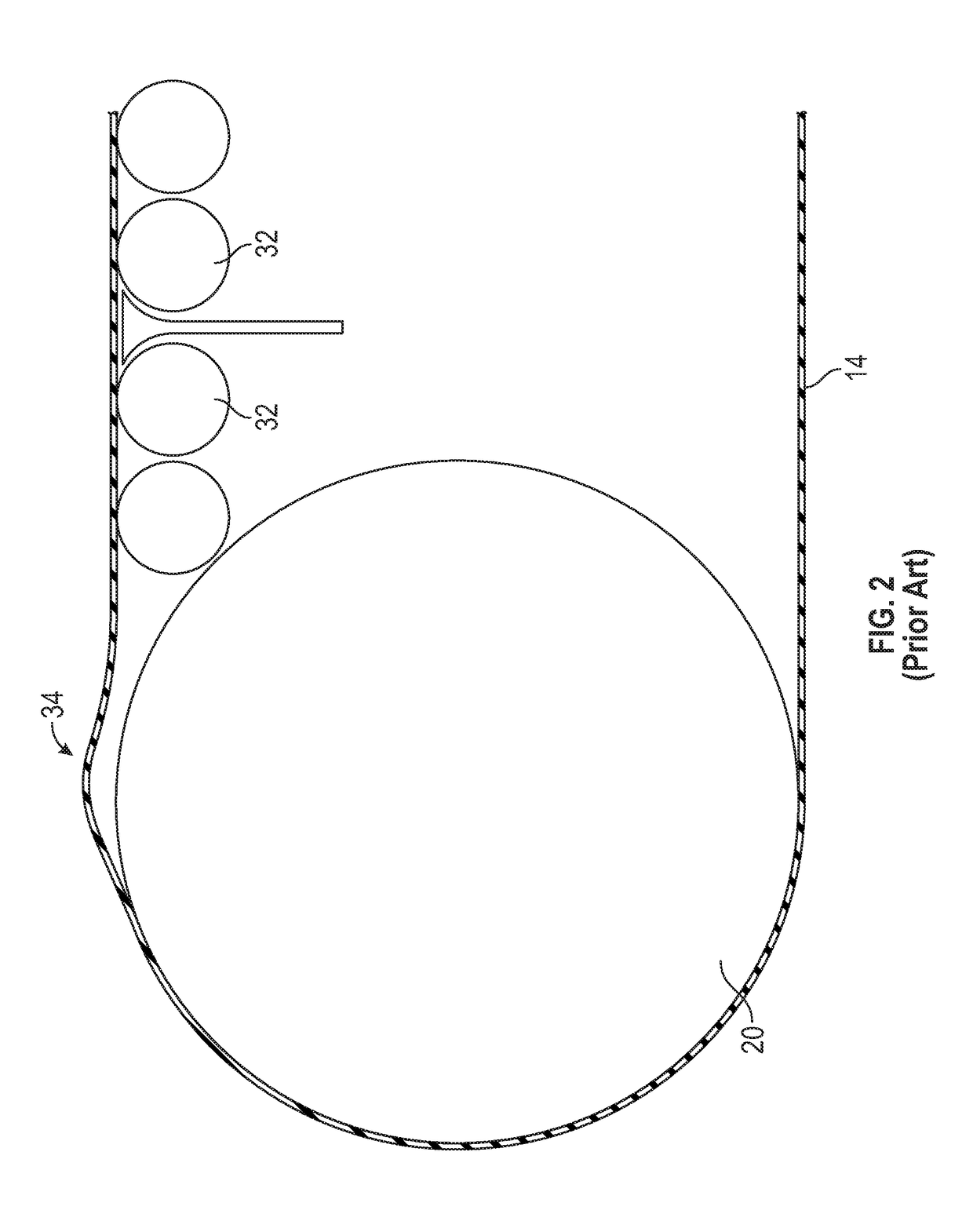System and method for continuous casting
a continuous casting and belt technology, applied in the direction of belts, metal processing, metal processing, etc., can solve the problems of limiting casting speed, affecting metallurgical quality, and the most unstable belt, so as to improve the metallurgical quality, including surface quality, of the cast strip, and improve heat transfer rate
- Summary
- Abstract
- Description
- Claims
- Application Information
AI Technical Summary
Benefits of technology
Problems solved by technology
Method used
Image
Examples
Embodiment Construction
[0026]Referring to FIG. 3, a twin belt casting apparatus 100 according to an embodiment of the present invention is illustrated. As shown therein, the casting apparatus 100 includes a first endless belt 112 carried by a first upstream pulley or roll 116 and a first downstream pulley or roll 118, and a second endless belt 114 carried by a second upstream pulley or roll 120 and a second downstream pulley or roll 122. Each roll is mounted for rotation about its longitudinal axis and serves to rotate, guide and / or tension the belts 112, 114. Either or both of the upper rolls 116, 118 and the lower rolls 120, 122 may be driven by a suitable motor (not shown). The belts 112, 114 are endless and are preferably formed of a metal which has low reactivity or is non-reactive with the metal being cast. As illustrated in FIG. 3, the upstream rolls 116, 120 are positioned one above the other, some distance apart to allow room for a metal feeding apparatus 128 to be positioned in the space, and de...
PUM
| Property | Measurement | Unit |
|---|---|---|
| radius | aaaaa | aaaaa |
| radius | aaaaa | aaaaa |
| thickness | aaaaa | aaaaa |
Abstract
Description
Claims
Application Information
 Login to View More
Login to View More - R&D
- Intellectual Property
- Life Sciences
- Materials
- Tech Scout
- Unparalleled Data Quality
- Higher Quality Content
- 60% Fewer Hallucinations
Browse by: Latest US Patents, China's latest patents, Technical Efficacy Thesaurus, Application Domain, Technology Topic, Popular Technical Reports.
© 2025 PatSnap. All rights reserved.Legal|Privacy policy|Modern Slavery Act Transparency Statement|Sitemap|About US| Contact US: help@patsnap.com



